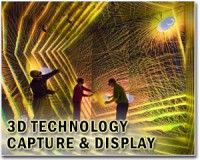 |
Stanford CA (SPX) May 05, 2011 Stanford and NASA researchers have confirmed two predictions of Albert Einstein's general theory of relativity, concluding one of the space agency's longest-running projects. Known as Gravity Probe B, the experiment used four ultra-precise gyroscopes housed in a satellite to measure two aspects of Einstein's theory about gravity. The first is the geodetic effect, or the warping of space and time around a gravitational body. The second is frame-dragging, which is the amount a spinning object pulls space and time with it as it rotates. After 52 years of conceiving, building, testing and waiting, the science satellite has determined both effects with unprecedented precision by pointing at a single star, IM Pegasi, while in a polar orbit around Earth. If gravity did not affect space and time, Gravity Probe B's gyroscopes would point in the same direction forever while in orbit. But in confirmation of Einstein's general theory of relativity, the gyroscopes experienced measurable, minute changes in the direction of their spin as they were pulled by Earth's gravity. "Imagine the Earth as if it were immersed in honey. As the planet rotated its axis and orbited the Sun, the honey around it would warp and swirl, and it's the same with space and time," said Francis Everitt, a Stanford physicist and principal investigator for Gravity Probe B.
A lasting legacy Stanford has been NASA's prime contractor for the mission and was responsible for the design and integration of the science instrument and for mission operations and data analysis. Much of the technology needed to test Einstein's theory had not yet been invented in 1959 when Leonard Schiff, head of Stanford's physics department, and George E. Pugh of the Defense Department independently proposed to observe the precession of a gyroscope in an Earth-orbiting satellite with respect to a distant star. Toward that end, Schiff teamed up with Stanford colleagues William Fairbank and Robert Cannon and subsequently, in 1962, recruited Everitt. NASA came on board in 1963 with the initial funding to develop a relativity gyroscope experiment. Forty-one years later, the satellite was launched into orbit about 400 miles above Earth. The project was soon beset by problems and disappointment when an unexpected wobble in the gyroscopes changed their orientation and interfered with the data. It took years for a team of scientists to sift through the muddy data and salvage the information they needed. Despite the setback, Gravity Probe B's decades of development led to groundbreaking technologies to control environmental disturbances on spacecraft, such as aerodynamic drag, magnetic fields and thermal variations. The mission's star tracker and gyroscopes were the most precise ever designed and produced.
Played a role in developing GPS Additional GP-B technologies were applied to NASA's Cosmic Background Explorer mission, which determined the universe's background radiation. That measurement is the underpinning of the "big bang theory" and led to the Nobel Prize for NASA's John Mather. "The mission results will have a long-term impact on the work of theoretical physicists for years to come," said Bill Danchi, senior astrophysicist and program scientist at NASA Headquarters in Washington. "Every future challenge to Einstein's theories of general relativity will have to seek more precise measurements than the remarkable work GP-B accomplished." Over the course of its mission, GP-B advanced the frontiers of knowledge and provided a practical training ground for 100 doctoral students and 15 master's degree candidates at universities across the United States. Over 350 undergraduates and more than four dozen high school students also worked on the project, alongside leading scientists and aerospace engineers from industry and government. Sally Ride, the first American female astronaut in space, worked on GP-B while studying at Stanford. Another was Nobel Laureate Eric Cornell, who also studied at Stanford. The findings appear online in the journal Physical Review Letters.
Share This Article With Planet Earth
Related Links Gravity Probe B at Stanford Gravity Probe B at NASA Space Technology News - Applications and Research
 3-D system guides helicopter brownout
3-D system guides helicopter brownoutLondon (UPI) Mar 30, 2011 Britain's Defense Science and Technology Laboratory has showcased leading technology that helps helicopters land safely in sandy and dusty destinations, including Afghanistan. Scientists from the laboratory, part of the British Ministry of Defense, have led the technical development of a pioneering approach to a problem they describe as low-visibility landing, otherwise known as helicop ... read more |
|
| The content herein, unless otherwise known to be public domain, are Copyright 1995-2010 - SpaceDaily. AFP and UPI Wire Stories are copyright Agence France-Presse and United Press International. ESA Portal Reports are copyright European Space Agency. All NASA sourced material is public domain. Additional copyrights may apply in whole or part to other bona fide parties. Advertising does not imply endorsement,agreement or approval of any opinions, statements or information provided by SpaceDaily on any Web page published or hosted by SpaceDaily. Privacy Statement |